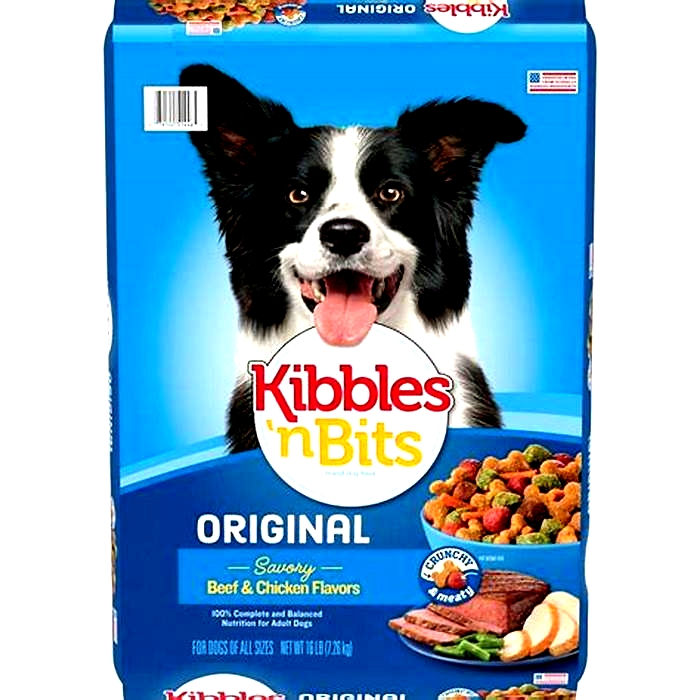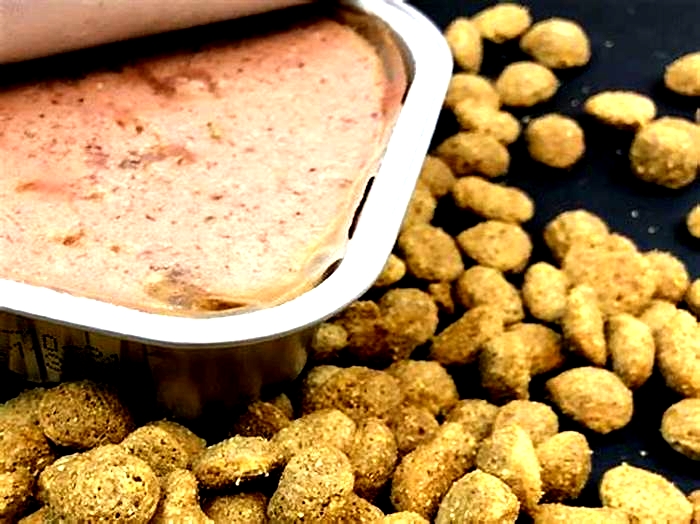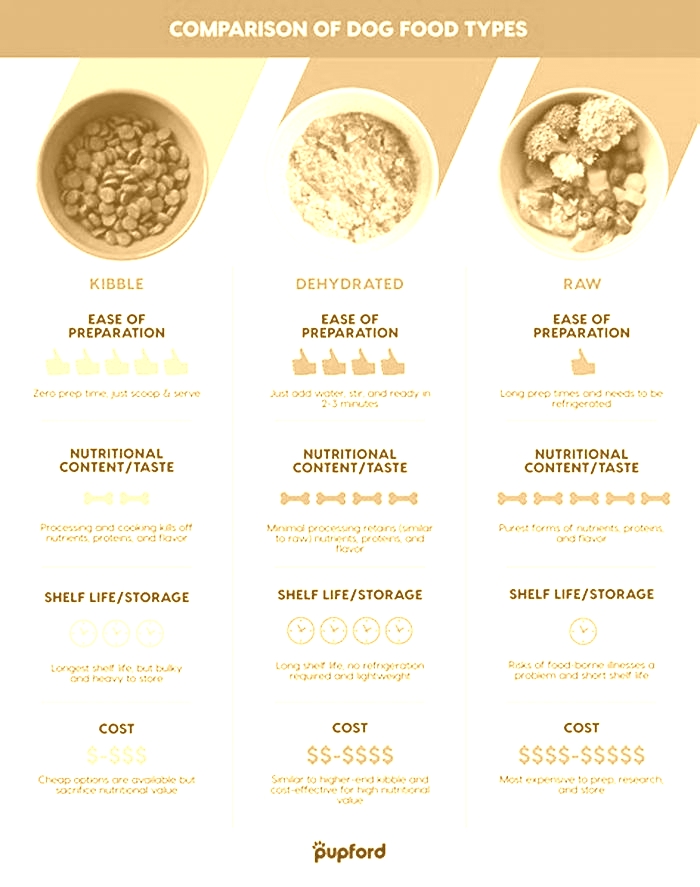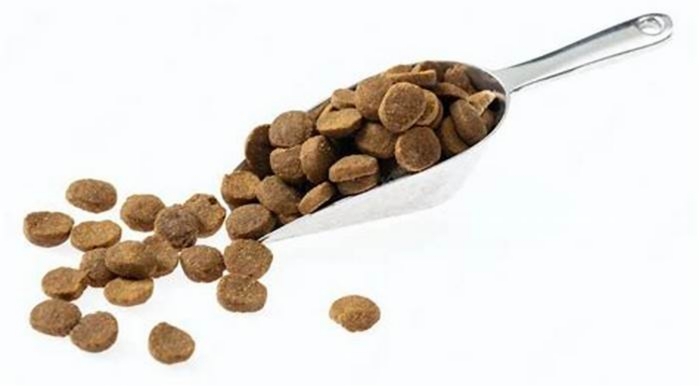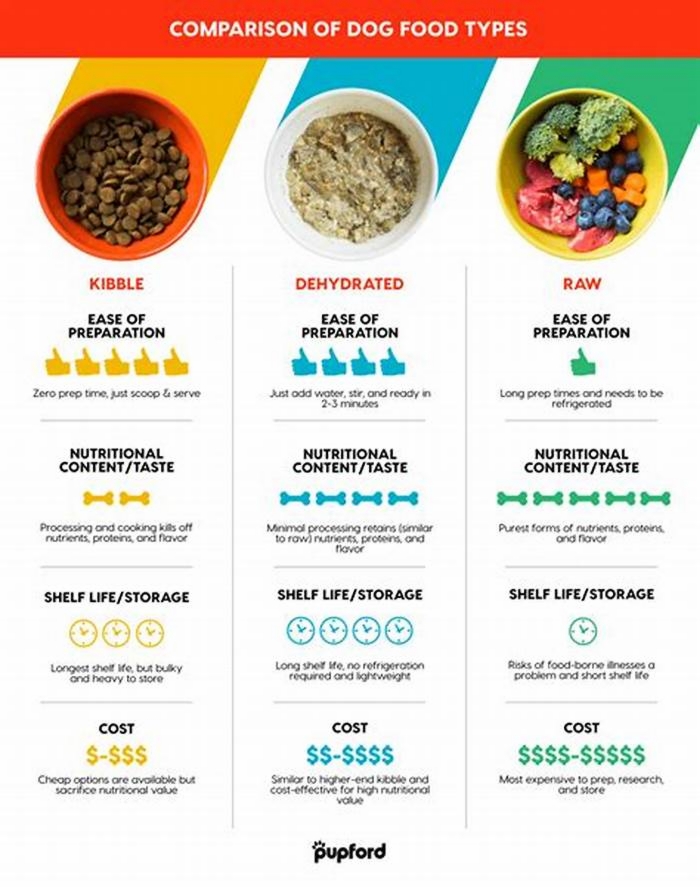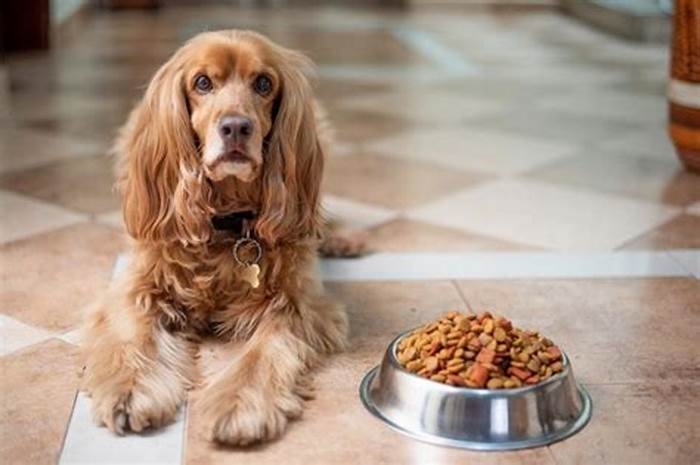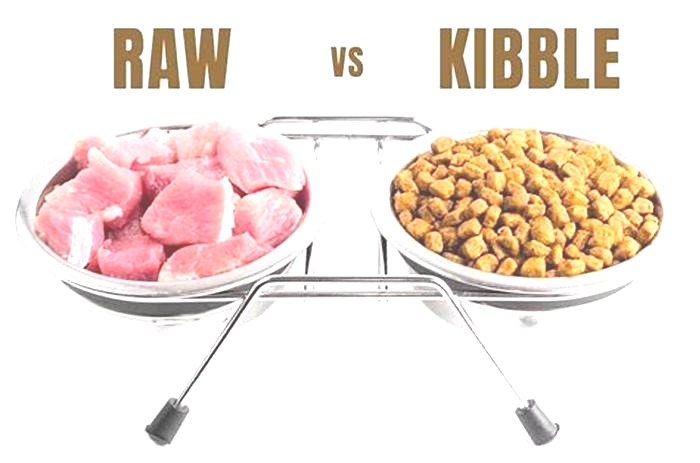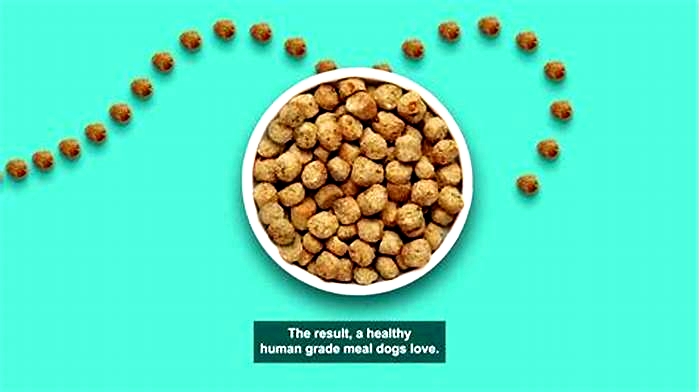Does raw dog food digest quicker than kibble
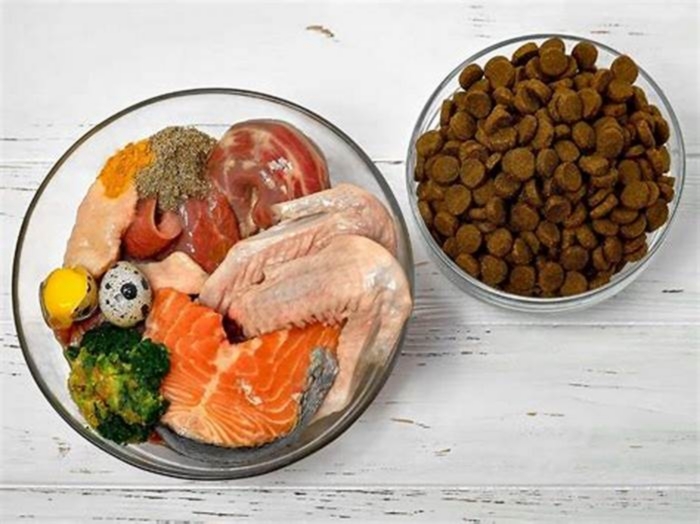
Does Raw Food Digest Faster Than Kibble?
A website called Raw Feeding Community attempted to put this question to bed once and for all, so they conducted an experiment witha dog being fed kibble and raw food separately,about 10 days apart. Both meals were consumed with barium, so that the movement of the food through the digestive tract could be radiographed and timed. Since the kibble exited the body faster than the raw meal, the website declared that their experimentoffered evidencethat there is no truth to the oft-repeated admonition that kibble and raw should not be fed together because kibble digests slower.
Is the experiment valid?
Firstly, although its an interesting exercise, I dont think any experiment that involves only one dog can be used to prove anything except what happened in that particular instance with that particular animal. If the experiment was replicated 20-30 times with different dogs and different types of foods and yielded the same result, we could begin to take it seriously. Apart from that, it is known that barium can cause constipation, so we dont know from this experiment how either of these two foods would perform without the barium.In addition, considering how unpleasant some of the side effects of barium are and how little useful information this experiment ultimately provided, one has to wonder if it was worthwhile putting an innocent dog through it.
Mixing causes problems, it cannot be denied
Secondly, the negative experiences of thousands of transitioning raw feeders who attempt to mix kibble and raw cannot be dismissed with one experiment. Personally, I did this once with a dog about 17 years ago and the result was an extremely unpleasant and messy bout with both diarrhea and vomiting. That was the last time I mixed kibble and raw. I have since transitioned dozens of dogs, and instructed hundreds of new raw feeders how to transition their dogs. Ive never had the experience again.
Does it even matter which digests faster?
Obviously, there is more to the question of whether kibble and raw can or should be mixed than the speed with which either goes through a dogs system. In fact, it may have nothing to do withtransit timeat all. Simply combining foods of different constituent make-up is problematic for dogs, who have a single chambered stomach which can only produce one type of chemical environment at a time. Generally, foods that require an acidic environment (such as protein) to be broken down should not be mixed with foods that require an alkaline environment (such as carbohydrates).When they are,the two different chemistries neutralize each other. When that happens, a good percentage of the food becomes waste rather than nourishment.
Most commercial pet foods combine many incompatible foods, and thats one reason why they are so unhealthy for dogs. Thatsonly part ofwhats going on when kibble and raw causeissues when fed together, however. Its not the digestive process that primarily causes problems, its the decomposition process.
The putrefaction problem
Raw food rots, kibble does not. (If you doubt that, leave a pile of each sitting on your counter for a week.) If the digestion of kibbletakes longer than it takesthe accompanying raw food takes to decompose, thebody may find it necessary to eject both foods.Historically, dogs have been able to digest food that is in a putrefied or partly putrefied state.However,even dogs have their limits. There are some foods and combinations of foods that they cannot digest. The body maysimply decide thatthemess created by all the ingredients of the kibble in addition to putrefying raw foodis betterdiscarded than absorbed. Thats one reason why any experiment aimed at answering the above question would need to be done with many different kinds of kibble. Grains and raw meat together create a digestive nightmare for a dog, for example. So a grain-based food might be more of a problem than a grain-free one (although it should be noted that even so-called grain free foods often contain lots of carbohydrates).
Cost vs. benefit
Both vomiting and diarrhea are very costly to the body, in terms of energy and fluids. The benefit has to be equivalent or greater than the cost in order for the body to expend its resources. In the case of vomiting or diarrhea that results from kibble and raw being combined, that benefit is a decrease in potential damage caused by absorption of the toxic by-products of putrefaction, or the inability of the body to make use of enough of the usable food to make it wortheliminating the unusable.The body does not make a mistake when it seeks to rid itself of indigestible food! So we have to conclude in those cases that benefit exceeded cost, even if we are never able to know with 100% certainty what the benefit was. Our goal is to make as few feeding mistakes as possible, so as to remove the bodys need to protect itself.
Vitality vs. tolerance
The bigger question is not whether raw food or kibble digest quicker, but why it is that some owners seem to get away with combining them. It may relate to the make-up of the kibble being fed. Or it may have more to do with the typical kibble-fed dogs lack of vitality. Thats because it takes energy for the body to conduct the emergency rejection of a food. Think of the analogy of a young child immediately spitting up after drinking a jigger of alcohol. The body of a child has a great deal more of his/her original vitality with which to protect itself than an adult who regularly drinks alcohol. The latter represents tolerance, and tolerance always exacts a price on the vitality of the organism.
Gradual transition is not necessary
The bottom line is that there is never any reason to mix kibble and raw food. Misguided attempts to transition a dog to raw feeding by dribs and drabs are not necessary when you understand all the dynamics involved. Transitioning a dog to raw feeding is the #1 thing you can do to ensure a long healthy life free of vet visits for your dog. Theres no reason to delay or do it gradually. When you finally learn that what youve really been feeding your dog is garbage, theres no reason to continue feeding it for even one more day.
Full instructions on how to successfully and cleanly transition a dog to raw feeding are contained in my book.
Raw vs Kibble Dog Food: Which Diet is Best?
This post may contain affiliate links. If you click and buy we may make a commission, at no additional charge to you. Please see our disclosure policy for more details.
Have you been thinking about switching your dog from kibble to raw dog food? You probably have a lot of questions. Is raw better than kibble? What are the pros and cons of raw dog food compared to kibble?
If you switch your dog to a raw diet, how can you be sure theyre getting all the nutrients they need? And what about homemade dog food how does that compare to raw or kibble?
The debate about raw vs kibble dog food is heating upall the time, with vets and proponents on both sides swearing their diet is the best.
All the talk can get confusing, so lets talk about your dog food options so you can make the best decision for your pups health. In the end, there is no wrong or right answer its all about whats best for your dog and your family.
Raw Dog Food vs Kibble: Quick Comparison
Already leaning toward one food or the other for your pup? Use this table to quickly decide which diet might be best for your dog.
| If you want | Then choose |
|---|---|
| Convenience | Kibble |
| Better nutrition | Raw |
| Lower cost | Kibble |
| Control over ingredients | Raw |
| Ingredient customization | Either |
Overview: Raw Food for Dogs
The raw diet is based on the idea that dogs should be eating a diet close to what their wolf cousins would eat, which would primarily be raw meat, organs, and bones.
Raw feeding has become increasingly popular since 1993 when Australian veterinarian Ian Billinghurst decided that dogs would thrive more on an evolutionary-based diet. He called it BARF, which stands for Bones and Raw Food or Biologically Appropriate Raw Food.
Many people swear by raw feeding, claiming their dogs are healthier and happier on a raw diet. Others, including the Food and Drug Administration (FDA) and many veterinarians, claim that raw diets are too risky due to the chances of bacterial contamination or an improperly balanced diet.
The biggest concern about raw diets is that it can be somewhatcomplicated and stressful ensuring your dog gets all the vitamins and nutrients they need when youre in complete control of what they eat. How do you know what to include in your dogs diet?
There are a few critical components that make a raw dog food diet work.
1. The diet MUST contain enough calcium
You need to make sure that your dogs diet is made up of 12-15% (raw) bone. While cooked bones can splinter and hurt your dog or their digestive system, raw bones are more flexible and are safer for your dog to chew on. With that being said, you can grind up the raw bones if youre concerned about whole bones being a choking hazard for your dog.
Eggshells also contain calcium and many people who feed their dog a raw diet like to add in raw eggs, but they should come straight from the chicken since supermarkets spray chemicals on eggs to sterilize them.
2. It should contain about 10-30% raw organ meat
Examples of raw organ meat include kidney, lung, testicle, brain, liver, and more. Organs contain important nutrients and vitamins that your dog would miss out on if you only feed your dog muscle meat.
Its important to mention that liver should never make up more than 10% of your dogs overall diet because its veryhigh in vitamin A and can give your dog diarrhea in large doses. Like everything about a raw diet, variety is key when selecting organ meats for your dog.
3. Lean muscle meat should make up the core of the diet
While somefat is crucial in your dogs diet, too much is detrimental. Choose things like skinless poultry or lean ground beef over poultry with skin or ground beef thats 85% lean or less. We should mention here that the heart is considered a muscle rather than an organ.
4. Fruits and vegetables are optional but beneficial
While many raw food advocates believe that dogs dont necessarily NEED fruits and vegetables, most will agree that dogs can benefit from the additional nutrients that fruits and vegetables can provide.
Some fruits and most vegetables should be steamed or run through a food processor first to help your dog get the nutrients. Dogs cant process raw vegetables verywell, so grinding them up or cooking them first makes it easier for your dogs digestive system to extract the nutrients they need.
5. You should avoid feeding starch
Starches like grains, rice, peas, and potatoes are a filler in commercial dog foods and cause your dog to produce excess insulin, which can lead to obesity or diabetes.
Starch has no nutritional value, and some vets believe that eliminating starch from a dogs diet is the primary reason so many dogs show improved health after switching from kibble to a raw diet. If your dog isnt getting any benefit from a food, then why add it to their diet?
6. Variety and balance are critical
Each meal doesnt need to be balanced, but the overall diet should balance out over the course of a few days to a week. You can achieve this by giving your dog a variety of different meats and organs along with a whole fish once a week for critical omega-3. Look for sales on various types of meats and organs to change up your dogs diet from time to time.
7. Proper food handling is crucial
One of the biggest concerns people have with raw feeding is the potential for your dog or human family members to get sick from bacteria associated with raw meat.
As long as you sterilize any surface that raw meat touches and wash your hands after handling it, your family should be safe, and healthy dogs are unlikely to be sickened by many bacteria that could be found in raw meat.
It should be noted that sick, elderly, or young dogs are more likely to become sick from bacteria found in raw meat and the potential risk for these dogs may not outweigh the benefits.
Key Benefits of Raw Dog Food
While few scientific studies have been done examining the benefits of raw food diets, reported benefits may include:
- Healthier gut
- Improved stools
- Natural nutrients rather than sprayed-on supplements
- Shinier coat
- Healthier skin
- More energy
- Cleaner teeth
Pros of Raw Dog Food:
- You know exactly what your dog is eating
- Potentially healthier
- Can be tailored around allergies or food preferences
- Raw bones are the most natural thing for your dog to chew on
- Potentially fewer dental cleanings needed
- Smaller, firmer poop
Cons of Raw Dog Food:
- Messy
- Requires a lot of freezer space
- Can be hard to make sure your dog is getting the right nutrients
- Risk of bacterial contamination
- Expensive
- Time-consuming
Overview: Dry Kibble Dog Food
Kibble is a fairly recent innovation when it comes to feeding dogs. Dog food kibble as we know it today was invented in 1956 by a division of General Mills called the Ralston Purina Company.
Until then, people primarily fed their dogs raw meat or table scraps. The Ralston Purina Company marketed its product as the best way to feed dogs, and the popularity of kibble grew until it was the most common dog food diet.
Kibble is made by a process called extrusion, where wet and dry ingredients are combined and cooked with high temperatures and high pressure, then cut into kibble shapes to cool and dry.
The high temperatures destroy many important nutrients, so a vitamin and supplement solution is typically sprayed on the kibble to add back the nutrients lost during the cooking process.
Commercial dog foods including kibble and canned food are regulated by the Association of American Feed Control Officials (AAFCO).
The oversight organization ensures that all commercial dog foods meet minimum nutrition requirements, so you have some assurance that your kibble should be nutritionally complete.
Although, it should be noted that AAFCO is a private corporation that includes representatives from many of the major dog food brands, so one could argue that they may not have the dogs best interests at heart.
The Food and Drug Administration (FDA) also oversees the safety of dog food and periodically issues recalls on commercial dog foods which may be harmful.
A recall may be initiated for a variety of reasons ranging from high levels of vitamin D to bacterial contamination to the presence of pentobarbital (the drug used to euthanize animals) or shards of metal.
If you believe kibble is the best choice for your large dog, check out our article on the Best Large Breed Dog Food (11 Top Picks).
Key Benefits of Kibble
Kibble has a variety of benefits over raw, including:
- Convenience
- Lower cost compared to raw
- Supposed to be nutritionally complete
Pros of Kibble Dog Food:
- Convenient
- Cheaper than raw
- Nutritionally complete
Cons of Kibble Dog Food:
- May not be the healthiest option
- Contains a lot of fillers
- Some dogs dont like the taste or texture
A Word About Homemade Dog Food
Some people go for an option in between raw and kibble diets and decide tocook their dogs meal themselves. Cooking your dogs food reduces some of the risks of feeding your dog a raw diet, but it has the same problems with making sure your dog is getting a nutritionally complete diet. You may accidentally cause your dog to suffer from malnutrition if your homemade diet is unbalanced.
If you enjoy cooking for your dogs and think thats the best option for feeding them, you should use recipes created by a veterinary nutritionist, and you should talk about your dogs homemade diet with your vet to make sure your dog is getting all the nutrients they need. You may need to supplement your dogs diet with fish oil or vitamins to ensure theyre getting everything they need.
For more information on homemade dog food, check out this article on the 10 Best Homemade Dog Food Recipes for Large Dogs.
Kibble vs Raw Dog Food: Head to Head Showdown
As you can see, both raw and kibble dog food diets have a variety of pros and cons, so theres no clear winner about which diet is best. Lets talk about a few specific categories to help you decide which diet is best for your dog and your family.
Convenience
Winner: Kibble
Hands down, the most convenient way to feed your dog is to scoop a couple of cups of kibble into a bowl. You can easily travel with it or let somebody else feed your dog with little worry.
Raw diets require a lot of planning and preparation and other people may be unwilling to feed it to your dog. With that being said, there are commercial freeze-dried raw diets available that have most of the benefit of a regular raw diet but are much more convenient than a traditional raw diet.
Health Benefits
Winner: Raw
This one is awarded with a bit of a caveat. There arent many studies that have been done regarding the health benefits of raw dog food compared to kibble.
However, plenty of studies have shown how humans are healthier when they eat less processed food, so along with the numerous anecdotes of dogs whose health has improved by switching to a raw diet, it seems likely that raw dog food is generally healthier than kibble.
Cost
Winner: Kibble
You can spend a ton of money on ultra-premium kibble or find super deals on raw meat. However, kibble is generally going to be cheaper than a raw diet, especially when it comes to large dog breeds.
A raw diet should be 2-3% of your dogs ideal body weight every day, which means 2-3 pounds of meat, bones, and organs every day for a 100-pound dog. That can be pricy.
Safety
Winner: Tie
There is always a risk of you or your dog getting sick from giving them a raw meat diet. However, there are also recalls on commercial dog foods every week or sodue to contamination by everything from bacteria to metal shards to elevated levels of vitamin D to pentobarbital, the drug used for euthanizing animals. Both foods could cause potential safety risks to your dog.
Its up to you to decide whether to trust the meat you buy yourself over the food you buy from companies who occasionally have serious problems with their food.
The Final Verdict: Is Raw Food Better Than Kibble for Dogs?
Only you can decide whats the best diet for your pup. If you travel a lot, raw might not be a good option. If you worry about contamination from a raw diet, then kibble might be the best bet for your family. Hopefully, weve given you enough information to help you decide which diet is best for you and your family.
You May Also Like
5 Best Freeze-Dried Raw Dog Food Brands
10 Best Dehydrated Raw Dog Food Picks
Best Natural Dog Food: Top 10 All Natural Dog Foods
The 5 Best Fresh Dog Food Delivery Services
References and Further Reading:
Jennifer Nelson is a passionate dog lover and pet care professional based in Denver, Colorado. With over 12 years of experience as a pet groomer, Jennifer has a wealth of knowledge and expertise when it comes to the health and well-being of dogs.
She is an accomplished pet care professional and writer who truly embodies the spirit of a dog lover. Her passion, expertise, and commitment to the dog community make her a valuable resource for anyone looking to learn more about the care and wellbeing of these wonderful animals.
Jennifers writing style is warm, engaging, and informative, and her articles are always well-researched and backed by her extensive professional experience. Her goal is to provide readers with valuable insights and advice on all aspects of dog care, from feeding and grooming to exercise and health.

